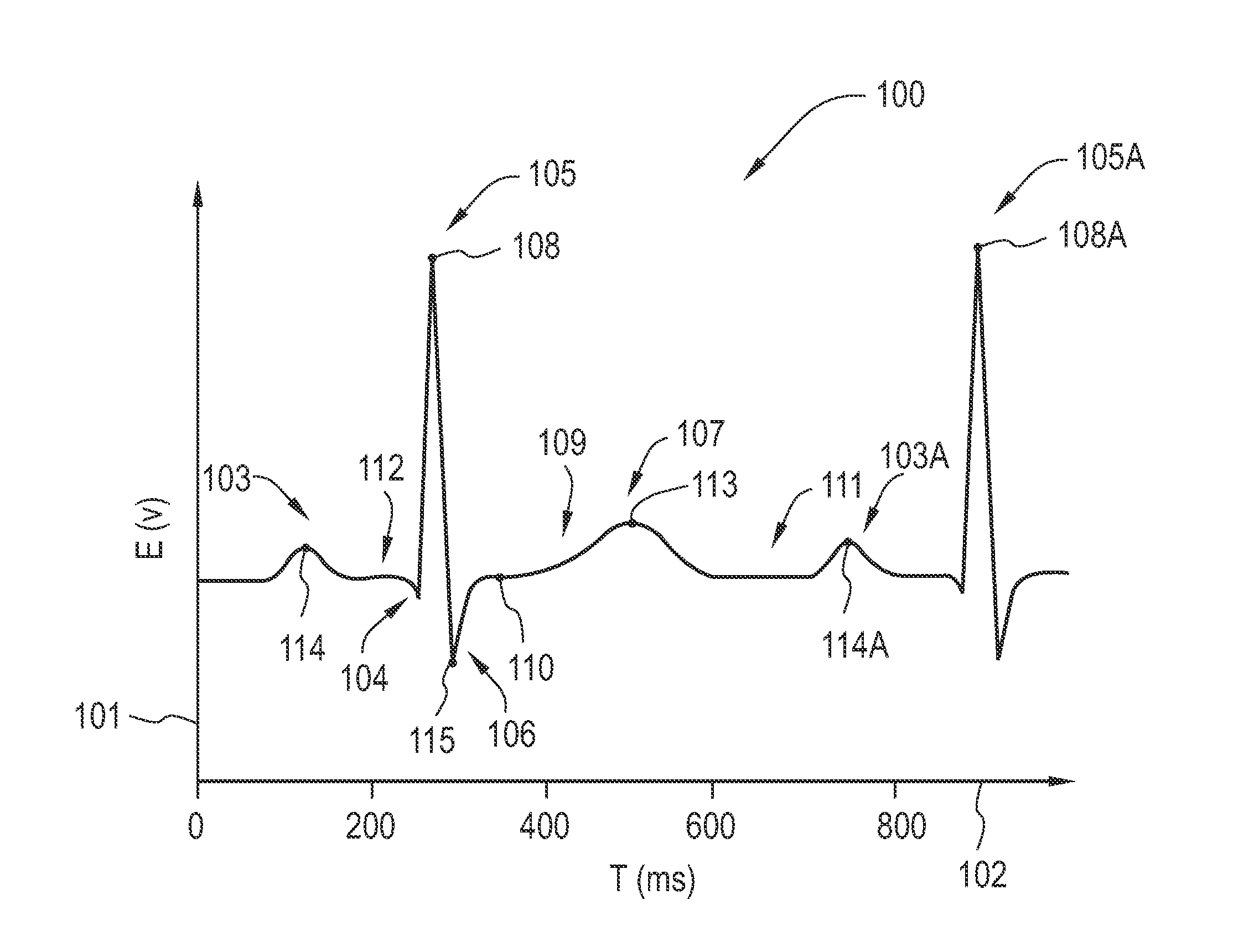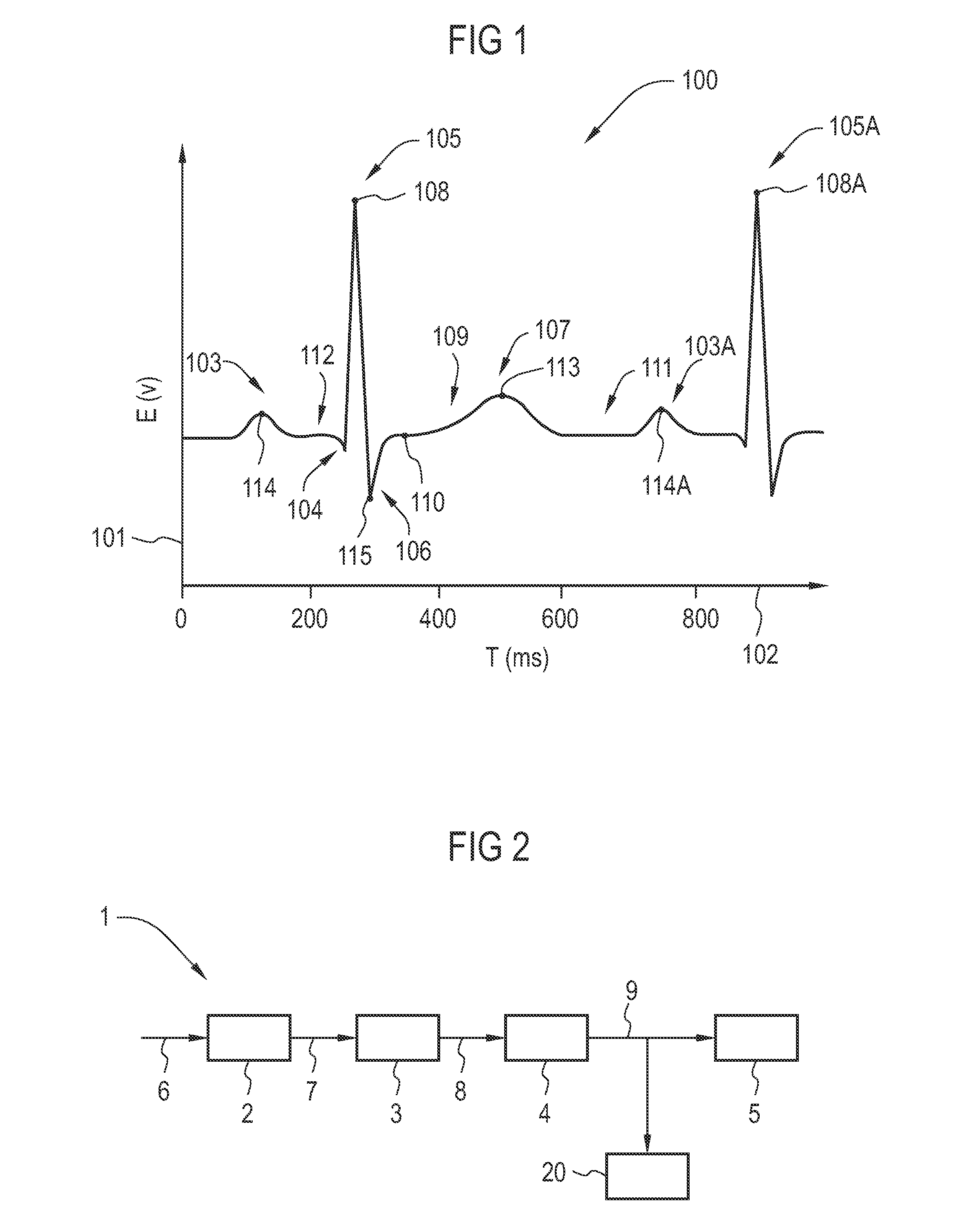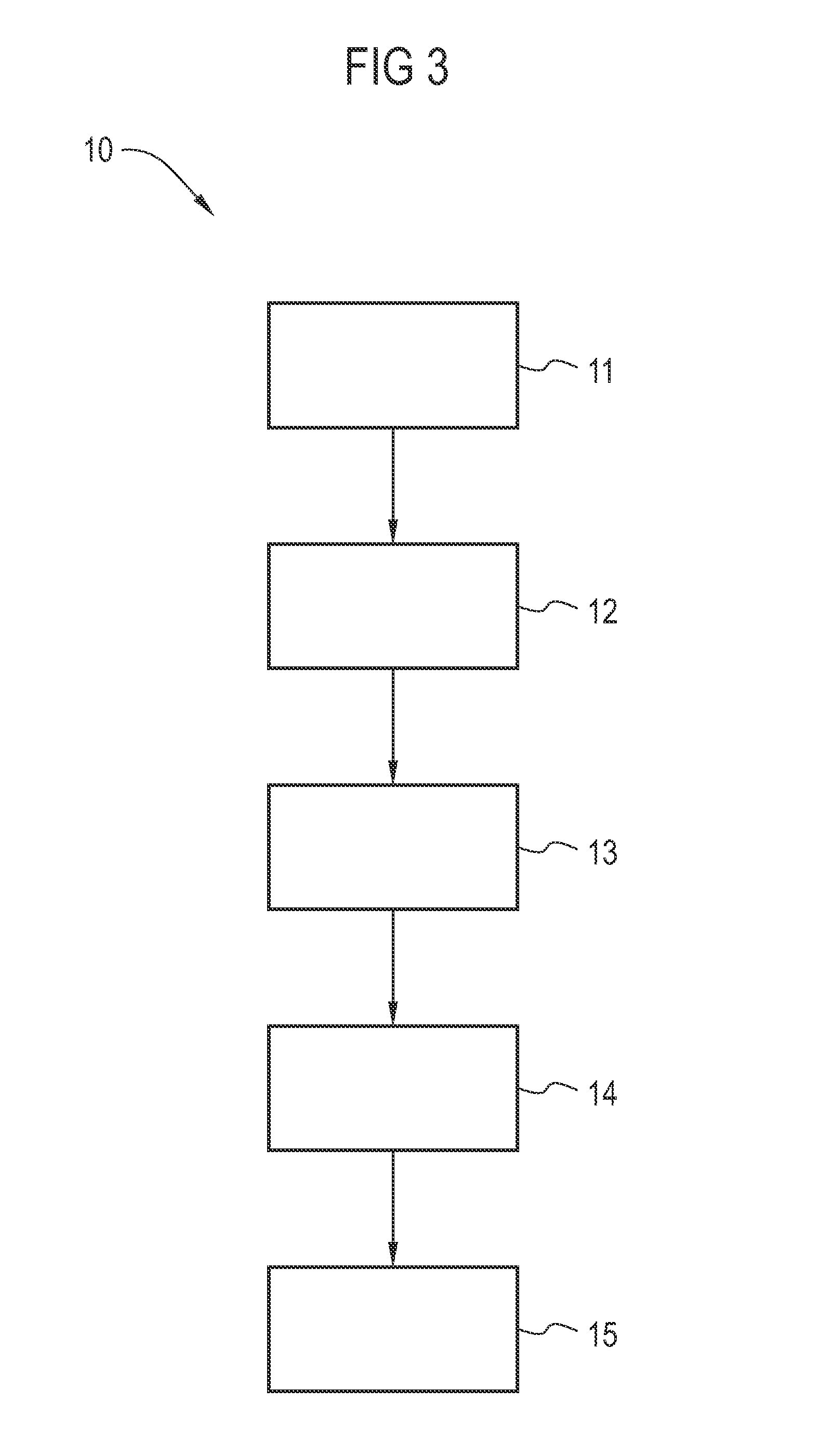System and method for analyzing an electrocardiogram signal
a system and signal technology, applied in the field of system and method for analyzing an electrocardiogram signal, can solve the problems of automatic measurement of st segment deviation and classification and achieve the effect of improving the accuracy of st segment morphology and accuracy
- Summary
- Abstract
- Description
- Claims
- Application Information
AI Technical Summary
Benefits of technology
Problems solved by technology
Method used
Image
Examples
Embodiment Construction
[0019]FIG. 1 shows an exemplary plot 100 representative of human ECG waveform, wherein the axis 101 represents an electrical voltage (V) associated with heart electrical activity of a patient as measured by an ECG electrode and the axis 102 represents time (ms). A deflection 103 is known as a “P-wave” and is a resultant of excitation of the atria of the heart. Deflections 104, 105 and 106 are known as “Q-wave,”“R-wave,” and “S-wave” respectively. The Q-wave, R-wave and S-wave in the ECG waveform result from excitation (de-polarization) of the ventricles of the heart and are hence collectively referred to as a QRS complex. It should be noted that not every QRS complex contains a Q-wave, an R-wave, and an S-wave. By convention, any combination of these waves can be referred to as a QRS complex. Deflection 107 is known as a “T-wave” and is a resultant of recovery (repolarization) of the ventricles. The temporal distance on the ECG waveform from the peak point 108 of a first R-wave 105 ...
PUM
 Login to View More
Login to View More Abstract
Description
Claims
Application Information
 Login to View More
Login to View More - R&D
- Intellectual Property
- Life Sciences
- Materials
- Tech Scout
- Unparalleled Data Quality
- Higher Quality Content
- 60% Fewer Hallucinations
Browse by: Latest US Patents, China's latest patents, Technical Efficacy Thesaurus, Application Domain, Technology Topic, Popular Technical Reports.
© 2025 PatSnap. All rights reserved.Legal|Privacy policy|Modern Slavery Act Transparency Statement|Sitemap|About US| Contact US: help@patsnap.com



